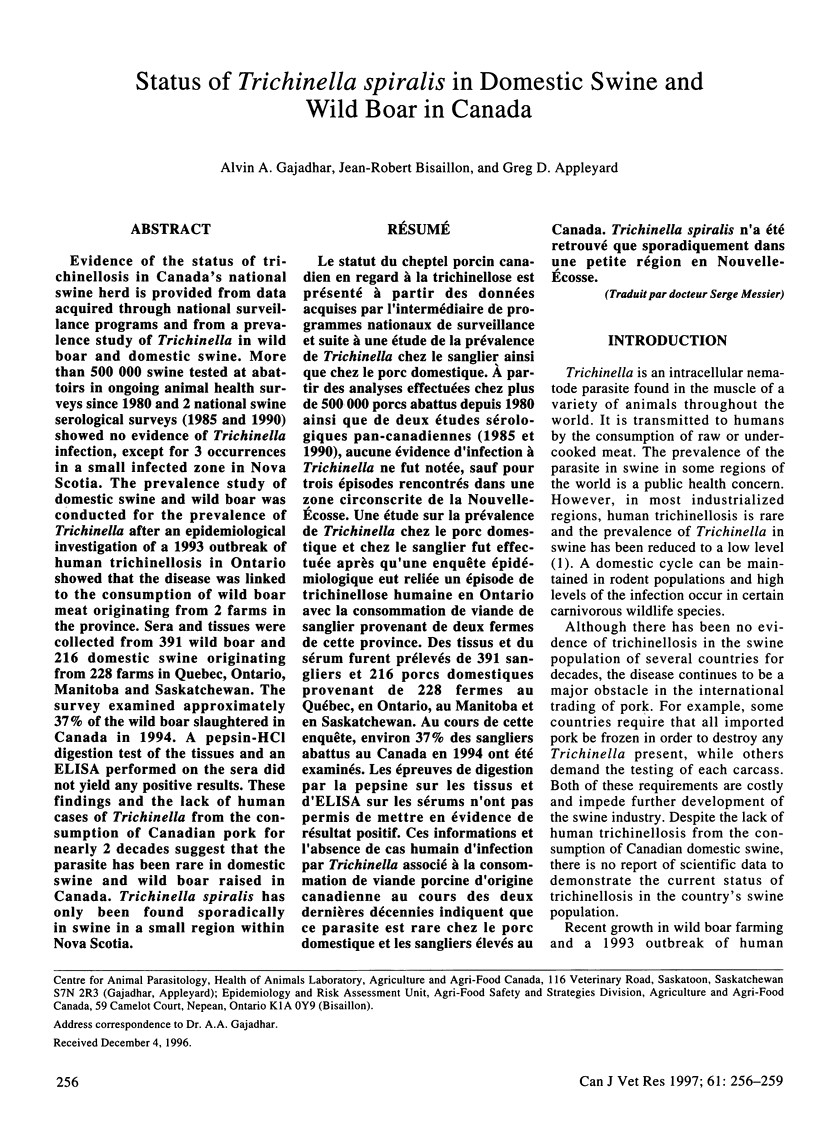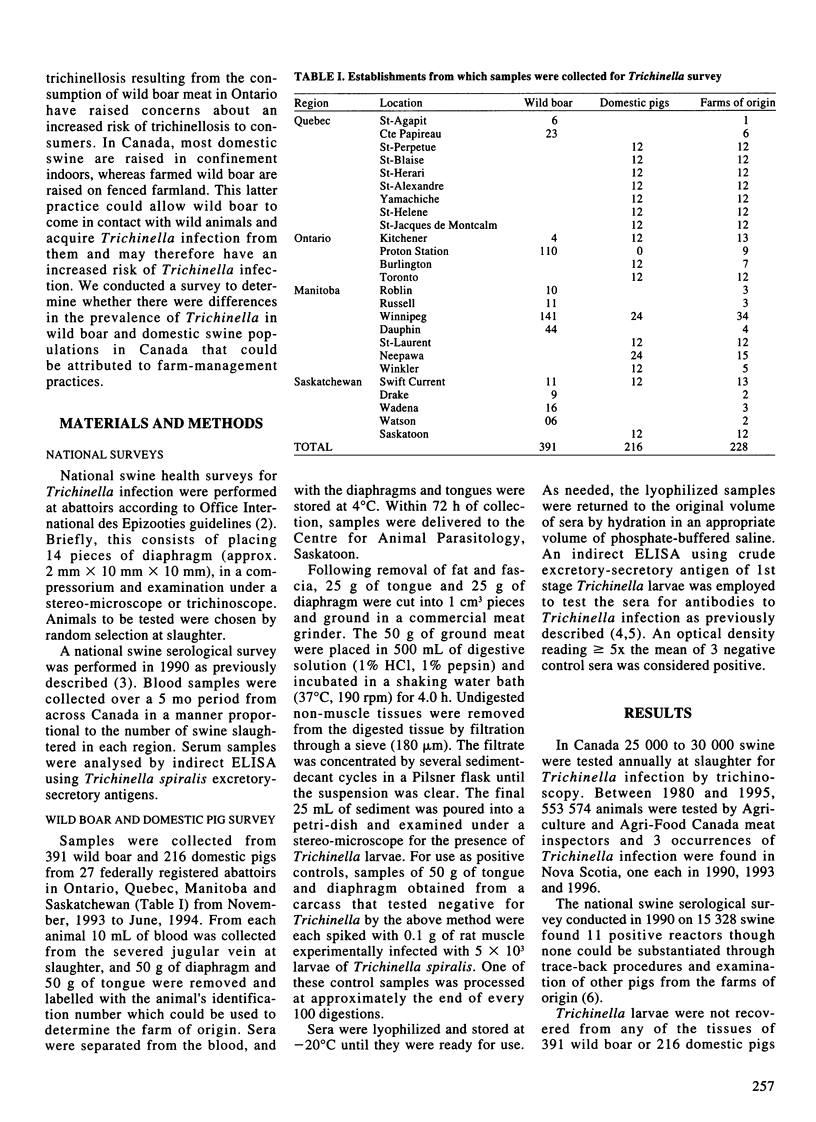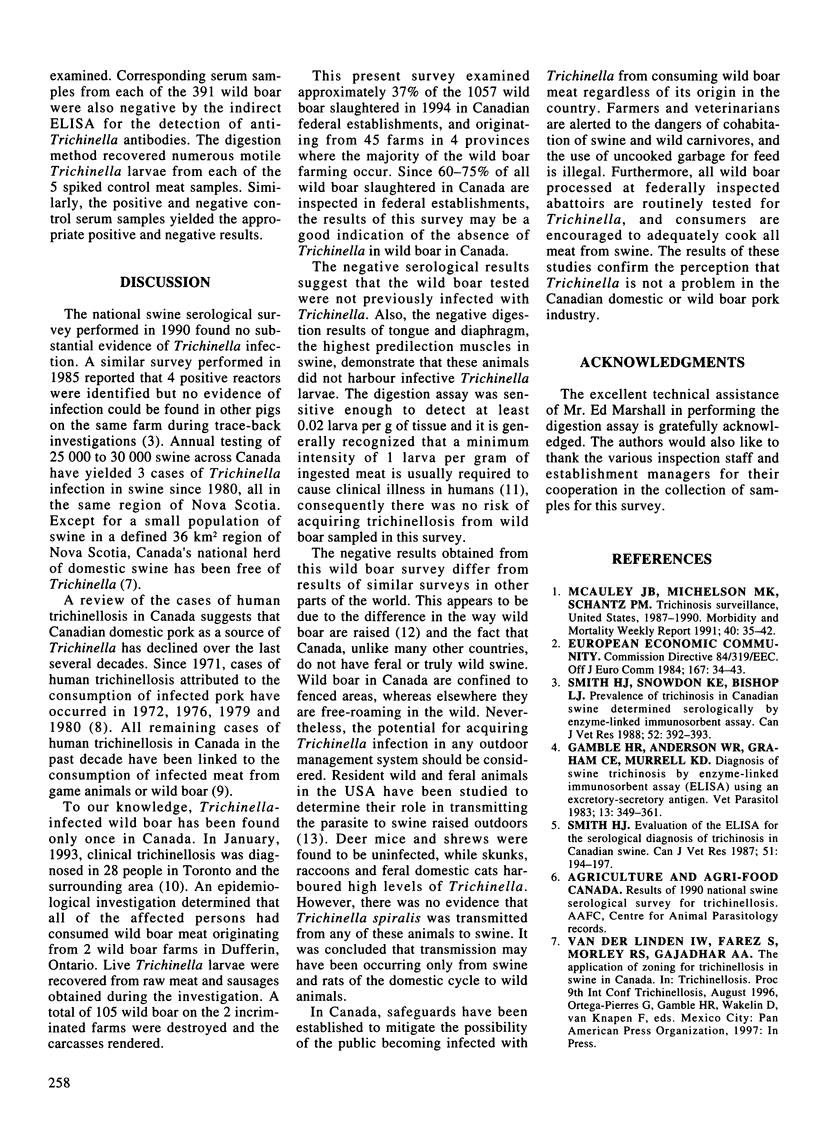Abstract
Evidence of the status of trichinellosis in Canada's national swine herd is provided from data acquired through national surveillance programs and from a prevalence study of Trichinella in wild boar and domestic swine. More than 500,000 swine tested at abattoirs in ongoing animal health surveys since 1980 and 2 national swine serological surveys (1985 and 1990) showed no evidence of Trichinella infection, except for 3 occurrences in a small infected zone in Nova Scotia. The prevalence study of domestic swine and wild boar was conducted for the prevalence of Trichinella after an epidemiological investigation of a 1993 outbreak of human trichinellosis in Ontario showed that the disease was linked to the consumption of wild boar meat originating from 2 farms in the province. Sera and tissues were collected from 391 wild boar and 216 domestic swine originating from 228 farms in Quebec, Ontario, Manitoba and Saskatchewan. The survey examined approximately 37% of the wild boar slaughtered in Canada in 1994. A pepsin-HCl digestion test of the tissues and an ELISA performed on the sera did not yield any positive results. These findings and the lack of human cases of Trichinella from the consumption of Canadian pork for nearly 2 decades suggest that the parasite has been rare in domestic swine and wild boar raised in Canada. Trichinella spiralis has only been found sporadically in swine in a small region within Nova Scotia.
Full text
PDF



Selected References
These references are in PubMed. This may not be the complete list of references from this article.
- Gamble H. R., Anderson W. R., Graham C. E., Murrell K. D. Diagnosis of swine trichinosis by enzyme-linked immunosorbent assay (ELISA) using an excretory--secretory antigen. Vet Parasitol. 1983 Nov;13(4):349–361. doi: 10.1016/0304-4017(83)90051-1. [DOI] [PubMed] [Google Scholar]
- MacLean J. D., Poirier L., Gyorkos T. W., Proulx J. F., Bourgeault J., Corriveau A., Illisituk S., Staudt M. Epidemiologic and serologic definition of primary and secondary trichinosis in the Arctic. J Infect Dis. 1992 May;165(5):908–912. doi: 10.1093/infdis/165.5.908. [DOI] [PubMed] [Google Scholar]
- Murrell K. D., Stringfellow F., Dame J. B., Leiby D. A., Duffy C., Schad G. A. Trichinella spiralis in an agricultural ecosystem. II. Evidence for natural transmission of Trichinella spiralis spiralis from domestic swine to wildlife. J Parasitol. 1987 Feb;73(1):103–109. [PubMed] [Google Scholar]
- Pozio E., Rossi P., Amati M. Epidémiologie de la trichinellose en Italie: corrélation entre le cycle sauvage et l'homme. Ann Parasitol Hum Comp. 1987;62(5):456–461. doi: 10.1051/parasite/1987625456. [DOI] [PubMed] [Google Scholar]
- Smith H. J. Evaluation of the ELISA for the serological diagnosis of trichinosis in Canadian swine. Can J Vet Res. 1987 Apr;51(2):194–197. [PMC free article] [PubMed] [Google Scholar]
- Smith H. J., Snowdon K. E., Bishop L. J. Prevalence of trichinosis in Canadian swine determined serologically by enzyme-linked immunosorbent assay. Can J Vet Res. 1988 Jul;52(3):392–393. [PMC free article] [PubMed] [Google Scholar]


